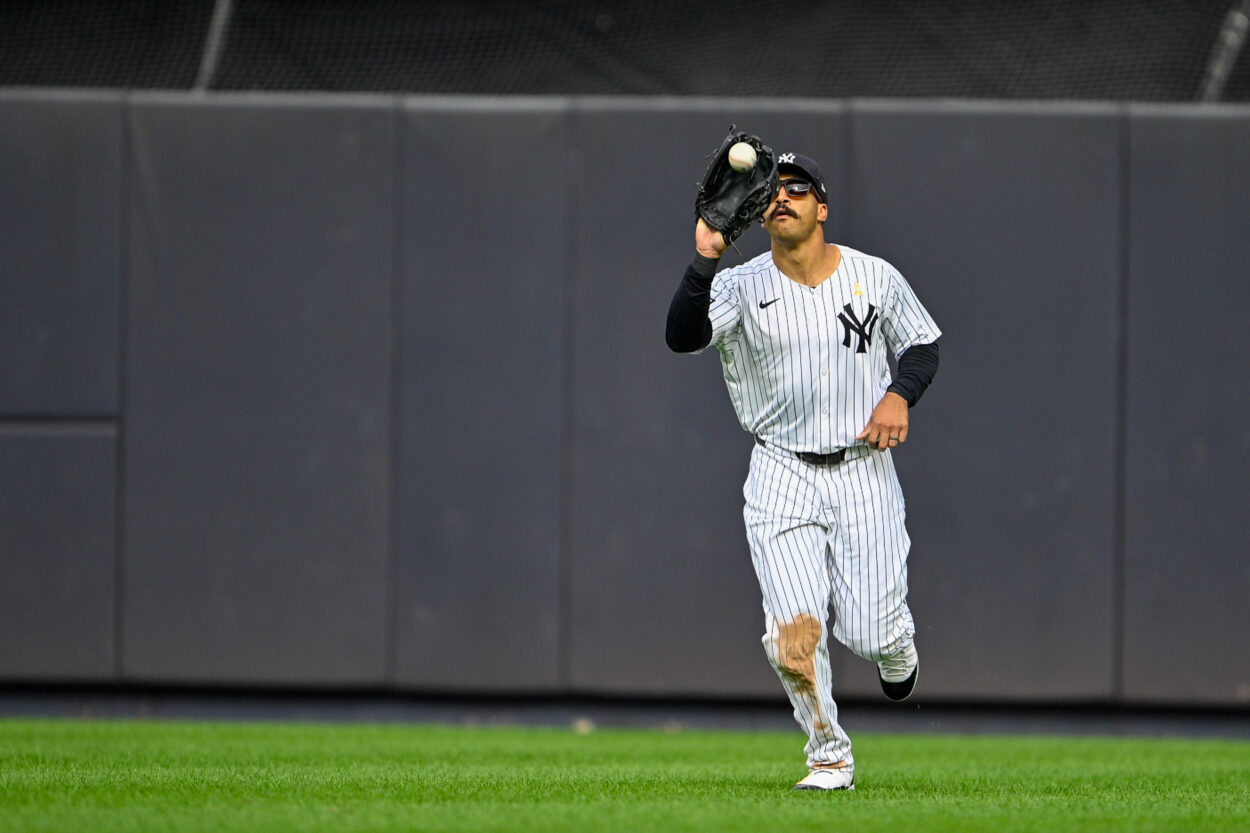
Every offseason starts with a number. For the Yankees, that number is $300 million — the luxury tax line Hal Steinbrenner treats like a live wire. They can cross it, but only if the roster truly demands it. That’s where things get complicated, because the Yankees entered the winter with roughly $70 million in breathing room and now sit much closer to the ceiling than they expected.
The Trent Grisham qualifying offer changed everything. One decision, one signature, and suddenly the Yankees’ flexibility shrank by nearly a third.
A shrinking budget at the worst possible time
Before Grisham accepted his $22 million QO, the Yankees had mapped out a far more fluid offseason. They wanted to retain Cody Bellinger, add a high-leverage reliever, and stay in the mix for a frontline arm like Japanese right-hander Tatsuya Imai. Those were the priorities. Those were the boxes they believed they could check.

Now the financial picture is tighter. With $259.3 million already projected for 2026, New York has only about $40 million left before reaching Steinbrenner’s soft cap. That’s not enough to comfortably handle Bellinger, a reliever, and a starter. Not without pushing past the line Hal hates crossing.
This leaves the Yankees in a familiar place: wanting to behave like a large-market titan but being boxed in by their own accounting.
Running it back… or something close to it
The reality is that the 2026 roster might look strikingly similar to 2025, and not by design.
Bellinger’s market sits around $25 million per year. A legitimate late-inning reliever will cost close to $12 million per season. Add a starting pitcher — even a mid-tier one — and the Yankees not only hit the threshold but blow straight through it.
That’s before they even address lingering dead money. DJ LeMahieu is still owed $15 million next season despite being cut loose. Giancarlo Stanton’s final stretch of salary still looms large. Gerrit Cole, while still essential to their plans, ties up a massive chunk of AAV.
The Yankees want to upgrade. They need to upgrade. But the math is punishing.

Creative solutions or uncomfortable sacrifices
There is a path to a cleaner puzzle, and it involves two strategies the Yankees rarely marry: creativity and risk.
They could use long-term contract structures that feature lower AAVs on the front end, ballooning later when the books naturally clear. Stanton comes off in 2028 with a $10 million buyout. LeMahieu’s money disappears after next season. Cole’s contract won’t run forever.
In that sense, the Yankees do have long-term flexibility. They just don’t have short-term breathing room.
The other route is a trade. Not a blockbuster, necessarily, but a reshuffling. They’re rich in young pitching and have multiple outfielders climbing the system. Packaging prospects or controllable arms could address roster holes without straining the bank.
It’s not ideal, but this is an offseason defined by tight margins.
The urgency of winning in Judge’s window
This isn’t a rebuild. This isn’t a transition year. Aaron Judge is still in his prime, and the Yankees can’t afford to treat these seasons like placeholders. They owe it to their captain — and to a fan base that expects more than “good enough” — to build a roster that can legitimately chase a title.
That means spending where necessary, taking calculated risks, and resisting the urge to play things too safe.
Because the clock isn’t ticking on New York’s finances. It’s ticking on the era they’re trying to salvage.
